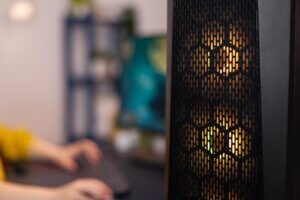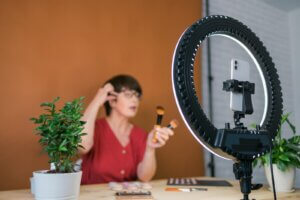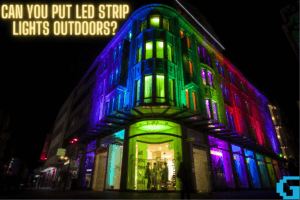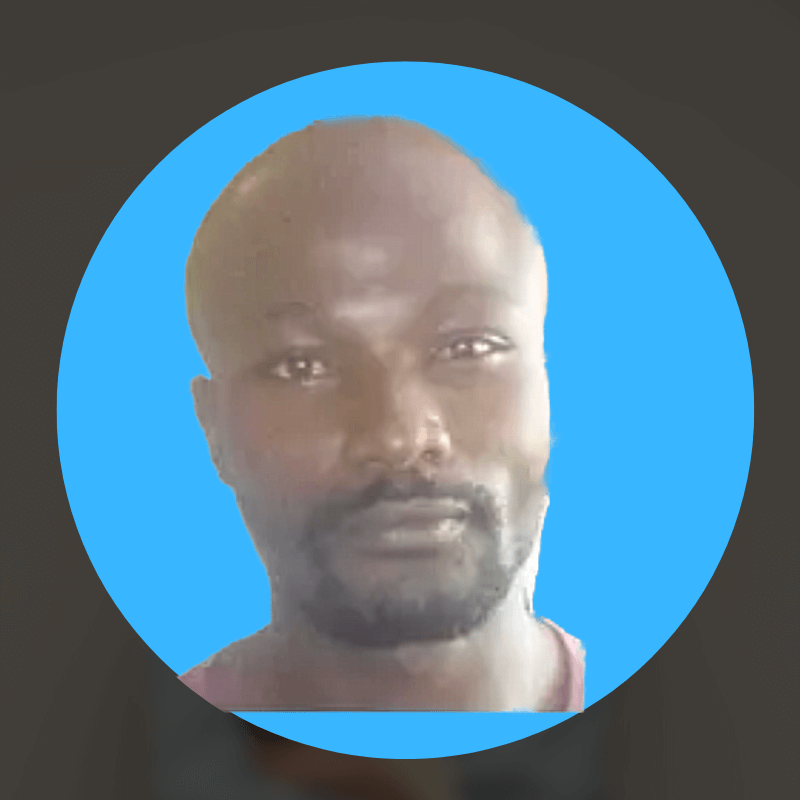Do you need to enhance your house with a unique color, but are you unsure how to put up LED lights without ruining the paint? Read this guide on how to hang led strip lights without damaging the wall.
Like most first-timers, I always considered adding LED lighting a time-consuming project. Besides, it calls for you to invest substantial resources and effort.
I didn’t want to get my hands or spend my precious time trying to do something I could hire a professional to help complete. I thus preferred sticking to my regular, outdated bulbs and lights.
Nevertheless, I looked on Google to find a few relevant contacts with some experience installing these lights. I planned to call a few experts and request them to help me put up LED lights in my house without damaging its paint.
The first contact was unreachable by phone. The next one was a bit busy working on a newly bought home a few miles from my house and insisted on updating me weeks later. At first, I was OK with waiting, even for a month. We made a deal and were to start doing the work in about three weeks.
That same day, one of my former roommates from college, James, visited my place. It’s over 10 years since we last met.
As we talked, I informed him about this big project I intended to start a few weeks later: adding LED strip lights. I’m sure he liked the idea.
James noted that he, too, had installed these lights and enjoyed the new feel at home. He quoted a few advantages he enjoyed after this home improvement project, and I couldn’t wait to enjoy the same. Read the following section to learn some of the advantages of LED lights.
Before he bought his new home, he used local bulbs but had to upgrade to add value to his property. I was surprised to hear that he installed this new tech with the help of his wife, and it looks great. It’s unbelievable!
I must have been missing the point in his message. I mean, “how do you hang led lights without damaging the wall?”
James told me that installing LED strip lights wasn’t as hard as I imagined. He’s a nurse by profession. He added that it was his first time doing such a job, and he had never needed the help of an expert. I couldn’t believe it.
To cut the story short, he shared these 9 simple steps to hang strip lights without damaging the wall in my house. I’ve noted these tips below, but before getting to this thorough guide, let’s see some advantages of upgrading your home by adding LED strip lights.
LED Strip Lights: The Benefits

So, why should you install LED lights in your home?
In addition to modernizing your interior design, LED strip lights provide a few other advantages. Just a few of the changes they make to your house are as follows:
- Energy-efficient
Because they use less energy than conventional incandescent bulbs of all types, LED lights are an excellent way to save money and the environment. Depending on the kinds of LEDs you ultimately decide to use, your house may become 60–70% more energy efficient, lowering your power costs and helping you benefit the environment.
- Less prone to overheating.
Since LED lights emit light more effectively than incandescent bulbs, they are less prone to generating heat. Because of this, they are not only among the safest lighting options for usage near children and pets, but they are also less prone to starting fires or harming fixtures and cables in various types of displays.
- Long-lasting
When a bulb runs out of life, it’s always a hassle, particularly if you haven’t stored up spares. Since LED lights typically have a lifespan of 50,000 hours, you could be able to use the same installation for ten years or more without ever needing to replace a single bulb. While LEDs do cost more than many other conventional lighting options, they are ultimately more cost-effective since they need far less upkeep.
- Versatile
The market’s most flexible lighting options are plug-in LED strip lights. They are ideal for all large and small installations since they are very customizable and can be readily cut to size with scissors or joined using connectors. Because of their flexibility makes, neon flex and traditional LED strips fit into tight areas. Some variants come with waterproof coatings for usage in bathrooms or outdoors.
- Simple installation
LED strip lights are the best option for homeowners wishing to make quick changes to their environment since they are so simple to install. Many strips have a self-adhesive backing, making it simple to stick them to practically any surface without needing additional equipment. Additionally, plug & play strips may all be controlled from a single remote, making it simple to organize your whole display with just a few clicks. In contrast to other forms of lighting, LED strips don’t require you to conduct any significant house wiring work.
You don’t want to miss such benefits. But is the project too demanding for you to manage by yourself? I followed his 9 steps, and I can confirm that anyone who follows each stage can enjoy those advantages.
Now, how do you hang led lights without damaging the wall? Here is what you need to know to complete the entire project without requesting help from any professional.
how to put up led lights without ruining the paint
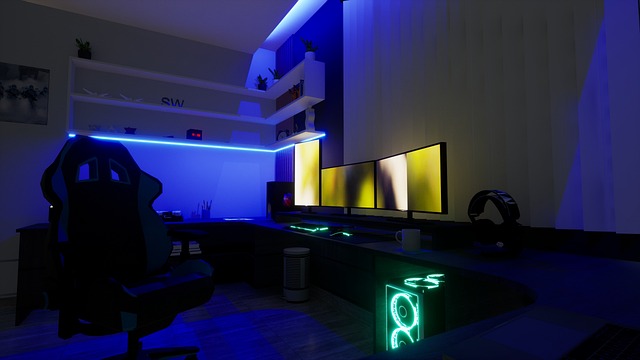
The recent trend in ambient lighting is to use LED strip lights to brighten your space. It gives the space a cozy, friendly ambiance and gives you your lighting.
LED strip lights are available in various colors, shapes, and hanging capabilities. Some are available in RGB, while others are only one color. Some plug right into a power outlet, while others need batteries.
Investing in an electrically driven LED strip is preferable. You can reduce your electricity bill since they use very little power. It would be best if you always had lights in your room, table, window, and other areas.
Most people are concerned about how to hang LED strip lights without harming the wall. We’ll discuss that in more detail in this article.
Step-by-Step Guide on How to Hang LED Strip Lights Without Damaging the Wall or Paint
Although hanging LED strip lights can seem tricky, it is relatively simple to execute with the correct equipment and guidance. The procedures required to hang LED strip lights without damaging a wall are outlined in this article.
Read on to learn all you need to know about hanging LED strip lights, whether you’re a seasoned DIYer or a novice bulb user.
- Prepare your led strip light for installation.
Cutting: Unplug everything (such as an extension cable) to prevent an accident before cutting your LED light strip. Shrink tube, length 1, Four 22uf capacitors are soldered in series with the LED strip after the shrink tube is trimmed to be 1-2 mm longer than the LED strip and 5 mm long at each side of the RGB connections.
Screwdriver: A screwdriver is required if you use screws to fasten the LED strip light to the wood or metal.
The Wooden or Metal Strip: Cutting a 3 cm wide by 35 cm long piece of wood would be best. Another option is to use a metal strip, but make sure it is free of paint. Otherwise, it would be difficult to attach the LED strip lights to the wall without causing damage to the paint.
Level: Use a level to check the straightness of your LED strip light.
The Paint Scraper: Use this to remove any paint from the area where you’ll attach the LED strip lights to the wall without removing too much paint. Removing any old adhesive left over from an earlier lamp would be best.
Measurement Tape or A Rule: Use this to gauge your LED strip light’s height and breadth and label it.
Pencil: Draw a line where on the wall you want your LED strip light to be installed.
Drill (Optional): You must first drill pilot holes to install the LED strip lamp with screws.
Saw (Optional): You may use a circular saw in its place if you are cutting a piece of metal or wood.
Jigsaw (Optional): You may use a jigsaw if you can cut a piece of metal or wood by hand.
Screwdriver Bit for A Cordless Drill/Driver: In place of a screwdriver, you may use this.
- Decide where you want to put your LED lights on the wall.
To ensure that the LED lights are straight, it is recommended to use a level. You may also attach them to the ceiling if you don’t feel comfortable making holes in your walls. You can see in my example below that I did it.
How Can I Choose the Best Wall Led Strip Lights?
After considering several aspects, you should choose the ideal wall-led strip lights for your requirements. Among these considerations are some.
- Color:
Choose a light that comes in some colors or one that You can readily paint to match your wall color if you want your led strip lights to match the color of your walls.
- Wattage:
Another crucial aspect to consider is the wattage of the led strip lights. The brightness of the light increases with the wattage. Higher wattage lights do, however, also use more energy, so if you’re worried about your electric bill, make sure to choose an energy-efficient light.
- Brightness:
Lumens are units used to express how bright an LED strip light is. Choose a light with a high lumen rating if you want an intense light. If you prefer a softer light, pick a light with a lower lumen rating.
Read our guide on the best LED light strips.
- measure the length of the LED light
It is time to measure the length of the LED light strip needed for your project.
To know where to turn off the electricity after you are done wiring them up, be sure to record the start and end of your measurement. If utilizing more than one LED strip, keep in mind that the total length of all strips combined must be 3 meters or less (you cannot connect several strips).
- making pencil marks for holes on your wall
Once all measurements are complete, start making holes on your wall with a pencil, 20 cm apart between each mark, at the locations where you want your LED light strip installed. If feasible, have a helper assist you with this step. Please be aware that the pencil markings you just created must match up when you drill, cut, or screw your selected material.
- a pilot hole is drilled
If possible, we highly advise drilling a pilot hole before using a jigsaw or circular saw to cut holes into your wall that are as big as the LED strip fitting. This should help reduce the fraying and cracking of the drywall and plasterboard surfaces surrounding each hole you create.
You may use a jigsaw instead of a circular saw, which was my initial concept since it’s simpler and quicker. Still, you can use whichever instrument suits you best! Wear safety eyewear if you are using power tools.
- Set your metal or wood strip in alignment with the markings you just created.
A paint scraper should remove any remaining paint from the surface until it is spotless and debris-free. Align your strip of wood or metal with the markings you just created. Additionally, ensure that the adhesive-covered side of your LED strip light faces the wall, not the wood or metal if it has an adhesive backing.
- Put some silicone sealer on in a thin coating.
Before adhering your LED strip light(s) to the inclined surface, apply a small layer of silicone sealer to the back of the light(s) to serve as an additional waterproofing barrier. Before connecting your LED lights, let the silicone sealant set for at least 2 hours.
- At the breaker box, disconnect the circuit from all electricity.
Before attaching your LED light strip(s), cut off the power to your circuit at the breaker box. After you’ve plugged them in, you may turn the power back on. You may simplify this task by using an extension cable or power strip.
- Finish
When the LED lights are turned on, and you see that they are not straight, gently remove the lights from the wall and rotate each LED light strip until they are (use a level if possible).
You got it, then! The simplicity of it was astounding. Although you had previously drilled pretty big holes into your walls, the silicone sealant, our old buddy, has given you a wonderfully clean finish with no markings on your walls.
Conclusion
That’s all there is to it. You now understand how to put up LED strip lights without ruining the paint and walls. This is a skill that anyone who wants to modify the appearance of their space should be able to use.
Additionally, LED strip lighting is something to consider if you are a business owner seeking a new technique to brighten your shop or workplace.
How to remove LED strip lights from a surface without damaging the paint?
Use a heat pistol. Warm up the strip beginning at the end on the lowest setting. You’ll be able to remove the strip since the glue will weaken. To prevent causing damage to the wall, go exceptionally gently.
Can LED lighting start a fire?
Unlike most other bulb types, LED lights do not emanate light from a vacuum. One of the possible causes of a bulb catching fire is overheating. However, LED lights are very rare to experience. Although they may be hot to the touch, they are substantially cooler than ordinary bulbs when producing light.
How do you move the LED strips?
The heat finally caused the glue to give and come off since I had only applied the strip with the regular adhesive backing.
Author
-
Stanley is a passionate writer who loves the written word. With more than seven years of experience in the field, I've learned how to make high-quality, engaging, and helpful content for various niches, such as finance, technology, health, fashion, and more. Writing should not only inform but also inspire and entertain the reader. When I write content, I balance how easy it is to read, how well it uses keywords, and how useful it is to the reader. I enjoy reading, learning about new technologies, and exploring nature in my free time. I look forward to bringing my writing skills to your site and engaging with your audience.
View all posts

